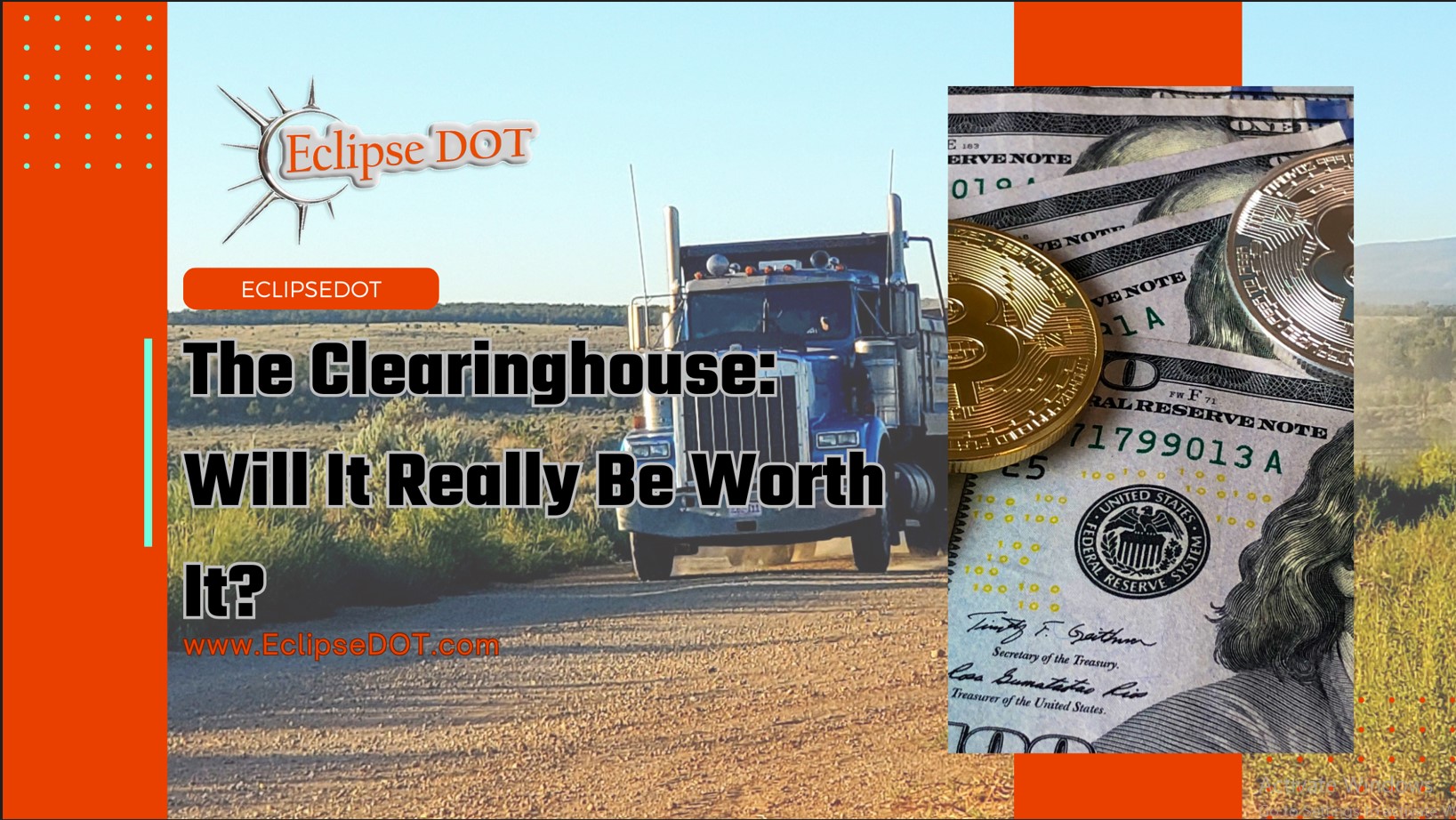The Clearinghouse
Most of us have at least heard about the new clearinghouse that the federal government put into effect on January 6, 2020. There are a lot of different “facts” floating around out there about this. Rest assured, we are here to help you understand what this is and how it really works. Let’s not wait any longer to get into all of this excitement.
With one of the transportation acts passed by the Obama administration came the Clearinghouse. The clearinghouse is completely new and does not currently take any regulations away from the industry. In fact, it adds a step for the next 3 years. Starting January 6th, 2020, if you hire a new CDL driver, you must conduct a full query through the clearinghouse, and those results must be negative. If you fail to conduct a query before allowing them to operate a CMV for you, then you might be faced with a critical violation in the event of an audit, or even worse, in the event of litigation, it could be construed as negligence.
The first thing you need to do is set up your employer account. It will ask that you tie your portal account to your clearinghouse account.
What’s a Portal Account?
Don’t stress if you don’t have a portal account; we would be more than happy to help you get one set up. The first thing you need is your DOT number. Next, grab your DOT pin number. I don’t know what that is! No worries, just go to https://cms8.fmcsa.dot.gov/registration/request-pin-number and work through the process. If you would like help, just let us know; we are more than happy to help you.
Why is this a good thing for industry?
These queries cost $1.25. That’s pretty cheap. I know that it’s a high price if you’re hiring lots of employees, but in the end, it will still save you money. The clearinghouse is going to alleviate the pain of sending out background checks to previous employers for the past 3 years.
This year you still have to send out background checks for the past 3 years of employers, and then next year you only have to send out background checks for the previous 2 years. Then, in 2022, you only have to send out previous background checks for one year. Finally, by 2023, you won’t have to send out those annoying background checks to previous employers. That’s awesome and going to save the industry so much time and effort.
My opinion is that the government should have opened the clearinghouse up to consortiums and third-party administrators for 3 years, then had industry start pulling queries. I’m not as smart as the federal government; I’m just a good old boy trying to make a living.
Difference Between a Full and Partial Query
A full query must be pulled for all new drivers prior to operating CMVs for your company. Full queries have to be approved by the driver. If the driver selects email as their primary contact, then the clearinghouse will send them an email immediately after a full query is requested. If the driver does not respond to the query, you cannot allow them to drive for you. If the results come back with any infractions, then as an employer, you must ensure that a negative return to duty (RTD) has been completed. If they never completed a RTD, then you can allow them to operate CMV’s until a negative RTD is recorded.
A partial query must be conducted on every driver every year. You must have a signed release from the employee prior to pulling these. My suggestion is to tie these to your annual review process. You can just add this when you pull MVR’s and the certificate of violations. If a partial query comes back with any infractions, then a full query must be pulled.
That’s a ton of information in a short amount of time. If you have any questions about the clearinghouse, the FMCSA portal, or if you just want to talk about our other services, don’t hesitate to call us. We are here to help make sure you are covered when it comes to DOT. Click here to dive deeper at eclipsedot.com/articles and drive your knowledge to new heights!


